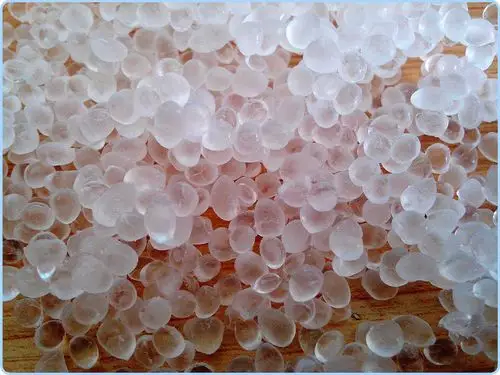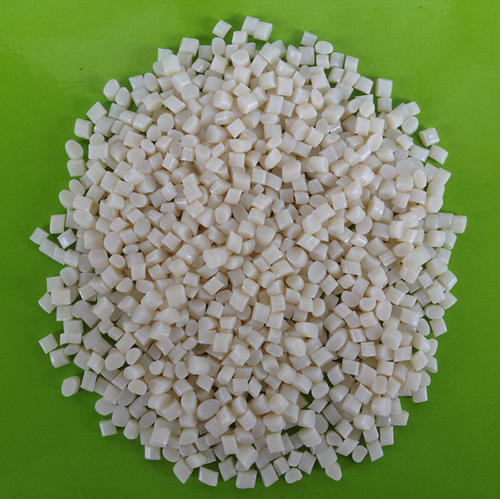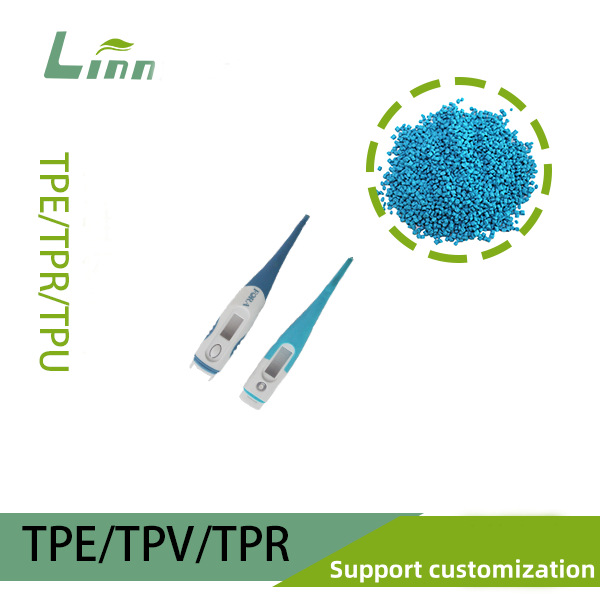As someone who’s been in the plastics industry for over a decade, I’ve worked with countless materials, from rigid thermoplastics to flexible elastomers. Among them, Thermoplastic Rubber (TPR) and Thermoplastic Elastomer (TPE) often spark curiosity and confusion. People frequently ask me how these two materials differ, which one suits their project better, and how to make an informed choice. Having navigated these questions in factories, client meetings, and late-night design sessions, I’m here to break it down in a way that’s clear, practical, and grounded in real-world experience. Let’s dive into the nuances of TPR and TPE, explore their properties, and help you decide which is right for your needs.

What Are TPR and TPE?
Before we get into the differences, let’s establish what these materials are. Both TPR and TPE belong to the family of thermoplastic elastomers, a class of materials that combine the flexibility and elasticity of rubber with the processability of plastics. This dual nature makes them incredibly versatile for industries like automotive, medical, consumer goods, and footwear.
TPR (Thermoplastic Rubber): TPR is a specific type of thermoplastic elastomer, typically based on styrene-butadiene-styrene (SBS) block copolymers. It’s formulated to mimic the elasticity and feel of traditional rubber while being easier to process. Think of TPR as a material that delivers a rubber-like performance but can be molded or extruded like plastic, making it a cost-effective choice for many applications.
TPE (Thermoplastic Elastomer): TPE is a broader category that includes various elastomeric materials, with styrene-ethylene-butylene-styrene (SEBS) being the most common base. TPEs are known for their softness, flexibility, and excellent resistance to environmental factors like UV light and weathering. TPE encompasses a range of subcategories, including TPR, TPU (thermoplastic polyurethane), TPV (thermoplastic vulcanizate), and more.
The confusion often arises because TPR is technically a subset of TPE, but in practice, manufacturers and suppliers use the terms to distinguish specific material compositions. Let’s explore the key differences to clarify things.
Key Differences Between TPR and TPE
To understand how TPR and TPE differ, we need to look at their chemical composition, physical properties, processing methods, and applications. Below, I’ve outlined the main distinctions based on my experience working with these materials in product development.
1. Chemical Composition
The foundation of TPR and TPE lies in their polymer structures, which significantly influence their performance.
TPR: Primarily composed of SBS (styrene-butadiene-styrene), a block copolymer created through living anionic polymerization. This process combines styrene and butadiene to form a material with hard, crystalline styrene regions and soft, amorphous butadiene regions. The result is a semi-crystalline structure that gives TPR itsබ
System: its rubber-like elasticity and thermoplastic processability. Sometimes, TPR uses SEBS (styrene-ethylene-butylene-styrene), but SBS is more common due to its cost-effectiveness.
TPE: Typically based on SEBS, which is a hydrogenated form of SBS. The hydrogenation process saturates the molecular structure, enhancing resistance to aging, yellowing, heat, and corrosion. TPEs may also include other types like TPU, TPV, or TPO (thermoplastic olefin), but SEBS-based TPEs are the most common in comparison to TPR.
This difference in base materials affects their properties, which we’ll explore next.

2. Physical Properties
The physical characteristics of TPR and TPE are shaped by their chemical compositions, leading to distinct performance traits.
| Property | TPR | TPE | Impact |
|---|---|---|---|
| Elasticity | High elasticity, similar to traditional rubber, with excellent resilience. | Moderate elasticity, softer and more flexible than TPR. | TPR is better for applications needing strong rebound, like shoe soles. |
| Hardness | Generally harder and more rigid (Shore A 20-90). | Softer and more flexible (Shore A 0-95), with a more delicate touch. | TPE is ideal for soft-touch applications like grips or medical devices. |
| Weather Resistance | Moderate resistance to UV, weathering, and aging. | Superior resistance to UV, weathering, and aging due to SEBS. | TPE is preferred for outdoor or harsh environments. |
| Chemical Resistance | Good resistance to oils, greases, and some chemicals. | Excellent resistance to chemicals, oils, and solvents. | TPE is more suitable for chemically harsh environments. |
Personal Insight: In my early days working on automotive parts, I noticed TPR was often chosen for interior components like gaskets due to its durability and cost-effectiveness. However, for exterior parts exposed to sunlight, TPE was preferred because of its superior UV resistance. This distinction often guides material selection in real-world projects.
3. Processing Methods
Both TPR and TPE are thermoplastics, meaning they can be melted and reshaped, unlike thermoset rubbers. However, their processing requirements differ slightly.
TPR: Due to its higher rubber content, TPR requires higher processing temperatures and specific techniques to achieve optimal results. It’s commonly used in injection molding, extrusion, and overmolding (e.g., soft grips on rigid tool handles). TPR’s semi-crystalline structure makes it slightly less forgiving during processing, requiring precise control to avoid defects.
TPE: TPE is more process-friendly, with excellent flow properties that make it suitable for blow molding, thermoforming, and high-volume injection molding. Its softer nature allows for easier molding of complex shapes, which is why it’s popular in consumer goods like phone cases.
Anecdote: I once worked on a project where we switched from TPR to TPE for a medical tubing application because TPE’s smoother flow reduced production time and improved surface finish. The client was thrilled with the cost savings and consistent quality.

4. Applications
The choice between TPR and TPE often comes down to the specific demands of the application. Here’s a breakdown:
| Application Type | TPR Examples | TPE Examples | Why Choose One? |
|---|---|---|---|
| Automotive | Gaskets, seals, bushings, floor mats. | Interior soft-touch components, weather-resistant exterior parts. | TPR for durability; TPE for UV resistance and comfort. |
| Consumer Goods | Shoe soles, toys, tool grips. | Phone cases, wearable device straps, soft-touch grips. | TPR for high elasticity; TPE for softness and aesthetics. |
| Medical | Flexible tubing, seals. | Medical bags, syringe stoppers, tubing. | TPE for biocompatibility and flexibility; TPR for cost-effective tubing. |
| Industrial | Industrial seals, vibration dampeners. | Vibration control components, flexible seals. | TPR for ruggedness; TPE for environmental resistance. |
Real-World Example: In a footwear project, we used TPR for shoe soles because of its excellent elasticity and wear resistance, which ensured long-lasting performance. For a medical device grip, however, TPE was the go-to choice due to its soft, comfortable feel and biocompatibility.
5. Cost and Sustainability
Cost and environmental impact are critical considerations in material selection.
Cost: TPR is generally more cost-effective than TPE, with prices ranging from $1.60 to $2.00 per kg compared to TPE’s $2.00 to $4.00 per kg. This makes TPR a popular choice for high-volume, budget-conscious projects like toys or automotive floor mats.
Sustainability: Both materials are theoretically recyclable as thermoplastics, but in practice, recycling rates are low due to economic challenges with lower-volume materials. Both are derived from petroleum-based sources, raising sustainability concerns. However, TPE’s SEBS base offers slightly better recyclability potential, and some bio-sourced TPEs are emerging.
Experience Note: I’ve seen clients opt for TPR in cost-sensitive projects, like mass-produced consumer goods, while TPE was favored in premium applications where recyclability or environmental resistance was a priority.
How to Identify TPR vs. TPE
If you’re handling raw materials and need to distinguish between TPR and TPE, here are some practical tips based on my experience:
Smell: TPR (SBS-based) often has a stronger, more aromatic odor, while high-quality TPE (SEBS-based) is nearly odorless.
Burn Test: When burned, TPR produces thicker, darker smoke due to its SBS base, while TPE emits lighter smoke with a faint aromatic smell. (Note: Perform this test in a controlled environment with proper safety measures.)
Glossiness: TPR tends to have a glossier finish, while TPE often appears matte and feels more delicate to the touch.
Touch: TPR feels slightly rougher and more rubber-like, while TPE has a softer, silkier texture.
Pro Tip: Always consult material datasheets from suppliers for precise identification, as formulations can vary. I’ve learned the hard way that relying solely on visual or tactile cues can lead to mistakes in fast-paced production environments.

Choosing Between TPR and TPE
Selecting the right material depends on your project’s specific requirements. Here are some guiding questions I always ask clients:
What’s the environment? If the product will be exposed to UV light, weathering, or chemicals, TPE’s superior resistance makes it a better choice. For indoor or less harsh conditions, TPR’s durability and lower cost may suffice.
How important is softness? If you need a soft, comfortable feel (e.g., for grips or medical devices), TPE’s flexibility is ideal. For applications requiring higher elasticity and rigidity, like shoe soles, TPR is often better.
What’s the budget? TPR is typically more affordable, making it suitable for high-volume production. TPE, while more expensive, offers premium properties for specialized applications.
Is recyclability a priority? Both materials are recyclable, but TPE’s SEBS base may align better with sustainability goals, especially if bio-sourced options are available.
Case Study: A client once approached me for a weather-resistant outdoor sports equipment component. Initially, they leaned toward TPR for cost savings, but after discussing the need for UV resistance and long-term durability, we opted for a high-grade SEBS-based TPE. The product lasted longer in harsh conditions, and the client saw fewer warranty claims, justifying the higher upfront cost.
Practical Considerations in Manufacturing
From a manufacturing perspective, both TPR and TPE offer significant advantages over traditional rubber, which requires time-consuming vulcanization. Here’s what I’ve learned from years on the factory floor:
Injection Molding: Both materials excel in injection molding, but TPE’s better flow properties make it easier to mold complex shapes with fewer defects. TPR requires careful temperature control to avoid issues like warping.
Overmolding: TPR is widely used for overmolding soft grips onto rigid substrates like tool handles due to its strong adhesion properties. TPE, however, doesn’t bond as well with adhesives, so it’s less common in such applications.
Processing Costs: TPE’s ease of processing can reduce production time, offsetting its higher material cost in some cases. TPR’s higher processing temperatures may increase energy costs.
Lesson Learned: During a project involving high-volume toy production, we initially used TPE for its soft feel, but switching to TPR reduced material and energy costs by 15% without compromising quality, significantly boosting the project’s profitability.

Environmental and Safety Considerations
Both TPR and TPE are considered safe for many applications, including those involving direct human contact, such as medical devices and toys. TPE, particularly SEBS-based, is often preferred for medical applications due to its biocompatibility and lack of toxic plasticizers like phthalates, which are sometimes found in older PVC formulations. TPR is also generally free of harmful substances like BPA and complies with regulations like ROHS, REACH, and EN71.
However, both materials are petroleum-based, raising concerns about their environmental footprint. While they’re recyclable in theory, actual recycling rates are low due to logistical and economic challenges. In my experience, companies prioritizing sustainability often explore bio-based TPEs or alternative materials like PLA (polylactic acid) for less demanding applications.
Anecdote: A client in the medical industry once insisted on TPE for a flexible tubing project due to its compliance with strict FDA regulations. The decision paid off, as the product passed rigorous safety tests with flying colors.
Conclusion
After years of working with TPR and TPE, I can confidently say that both materials are game-changers in the world of plastics, offering a unique blend of rubber-like elasticity and plastic-like processability. TPR shines in applications requiring high elasticity, durability, and cost-effectiveness, such as shoe soles and automotive gaskets. TPE, with its softer feel and superior environmental resistance, is ideal for soft-touch consumer goods, medical devices, and outdoor applications.
The choice ultimately depends on your project’s needs—whether it’s budget, performance, or environmental considerations. By understanding their chemical compositions, physical properties, and processing requirements, you can make an informed decision that balances quality and cost. If you’re still unsure, consult with a material supplier or manufacturer to get samples and test them in your specific application. In my experience, hands-on testing is the best way to confirm the right fit.

Frequently Asked Questions
Q: Can TPR and TPE be used interchangeably?
A: Not always. While they share similarities, TPR’s higher elasticity and rigidity make it better for applications like shoe soles, while TPE’s softness and weather resistance suit products like medical tubing or soft-touch grips. Always consider the specific requirements of your project.
Q: How can I tell if a product is made of TPR or TPE?
A: Check the product’s material datasheet or perform tests like the burn test (TPR produces denser smoke) or glossiness check (TPR is glossier). Consulting the manufacturer is the most reliable method.
Q: Are TPR and TPE environmentally friendly?
A: Both are recyclable thermoplastics, but actual recycling is limited due to economic challenges. They’re petroleum-based, so they’re not inherently sustainable. Bio-based TPEs are emerging as greener alternatives.
Q: Which is better for outdoor applications?
A: TPE is generally better due to its superior UV and weathering resistance. TPR can work but may degrade faster in harsh conditions.
Q: Why is TPE more expensive than TPR?
A: TPE’s SEBS base and advanced processing properties increase its cost. However, its performance in demanding applications often justifies the price.
Q: Are TPR and TPE safe for medical or food-contact applications?
A: Yes, both can be safe if formulated to meet regulations like FDA or ROHS. TPE is often preferred for medical applications due to its biocompatibility and softer texture.





